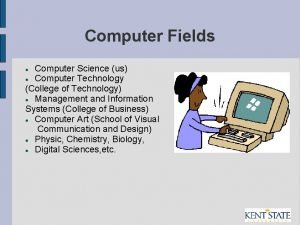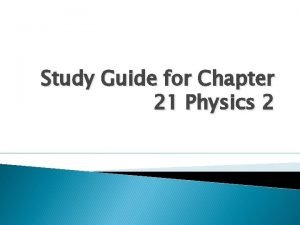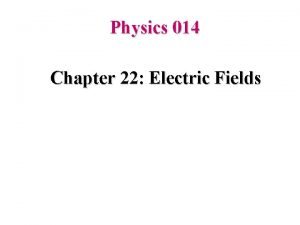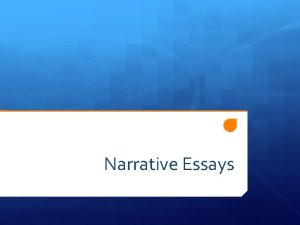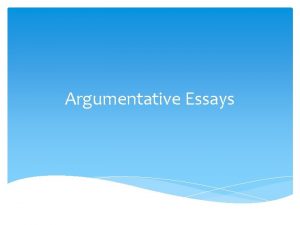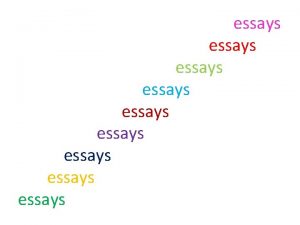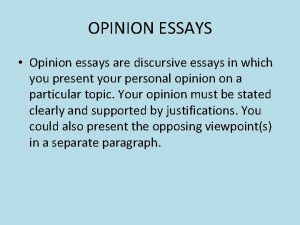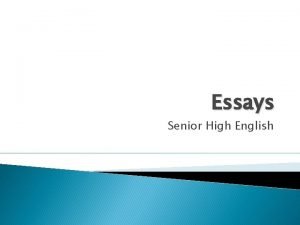Narrative Essays Chapter 4 Narrative Across Fields Science







- Slides: 7

Narrative Essays Chapter 4

Narrative Across Fields • • • Science • To describe the process and significance of methods, experiments and discoveries Social science • Anthropologists, sociologists, and psychologists write narrative-based cultural histories, field reports, and case studies to record their observations and findings Business communications • Valued as a way of illustrating methods, profiling successful people, and supporting solutions to problems

• • • Basic Elements of Narratives A narrative essay addresses: • • A central issue And supports a view Four basic elements • • An event A setting Descriptive details A point Find the above elements in the passage on pg. 121

Writing a Rough Draft • A formal essay/academic argument/research paper • Includes a thesis, supporting paragraphs in a deductive format • A narrative essay • Organized informally, and in inductive pattern

Writing a Rough Draft • The opening • • • Begin with a compelling presentation of the central issue “in the moment” Read the passage on pg. 141, why is it successful as an opening?

Writing a Rough Draft • Using description and detail • • Show, don’t tell! Describe significant incidents, scenes, and conversations that move the story forward and bring the central issue to life

Writing a Rough Draft • Using dialogue • • Narratives are meant to mimic real-life, and real-life includes dialogue That said, overdone dialogue can read as tedious • Verb tenses • The past tense is typical, but you may make the stylistic choice to write in the present • Whichever verb tense you choose, make sure you are consistent!


